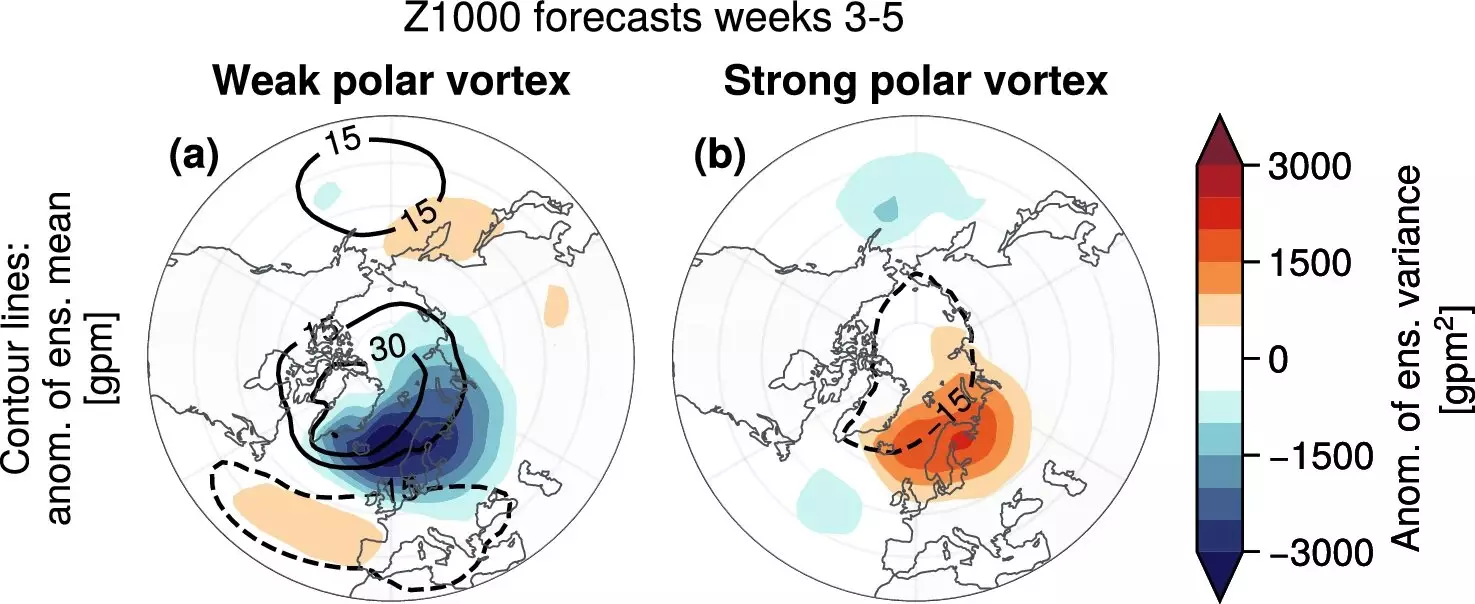Meteorologists at LMU have uncovered a significant correlation between events in the stratosphere and the accuracy of long-range weather forecasts in Northern Europe. The ability to predict weather conditions weeks in advance is crucial for various sectors such as agriculture, energy, and public health. However, the inherent chaos of weather systems often leads to low accuracy in long-term forecasts. Any improvement in the predictability of weather conditions can have far-reaching benefits for the economy and public safety.
One of the key findings of the research conducted at LMU is the impact of the polar vortex breakdown on long-range weather forecasts. The polar vortex, a strong eastward circumpolar flow in the stratosphere, plays a crucial role in determining the behavior of the North Atlantic jetstream and, consequently, the weather patterns over Eurasia. When the polar vortex weakens or breaks down, there is a tendency for the North Atlantic jetstream to shift southward, leading to an increased likelihood of cold spells over Eurasia. While such vortex breakdowns are rare occurrences, they have a significant impact on the weather in Northern Europe.
The study published in Communications Earth & Environment by LMU meteorologists highlighted another important aspect of stratospheric influence on long-range weather forecasts. Weak polar vortex states, like the one currently observed, are followed by a reduced uncertainty in 3-5 week forecasts over Northern Europe. The research findings show that ensembles of forecasts display a narrower range of possible weather conditions, reducing uncertainty by about 25%. This reduction in forecast uncertainty is attributed to the southward shift of the North Atlantic jetstream, which leads to less storm activity and more predictable weather patterns over Northern Europe.
While the reduced uncertainty in weather forecasts benefits Northern Europe, the opposite effect is observed in Southern Europe. The southward shift of the North Atlantic jetstream leads to an increase in forecast uncertainty over Southern Europe. The tracks of winter storms, which are the primary source of forecast uncertainty during this season, are affected by the stratospheric events, causing a shift in the predictability of weather patterns in different regions. Understanding these meteorological phenomena is crucial for improving the accuracy of long-range weather forecasts and minimizing the associated risks.
The research conducted by LMU meteorologists sheds light on the complex interactions between the stratosphere and long-range weather forecasts in Northern Europe. The influence of the polar vortex breakdown and the subsequent southward shift of the North Atlantic jetstream have significant implications for the predictability of weather conditions weeks in advance. By studying these phenomena, meteorologists can improve the accuracy of long-range weather forecasts, benefiting sectors like agriculture, energy, and public health. As we continue to unravel the mysteries of the atmosphere, our ability to forecast weather conditions with greater precision will only improve, ushering in a new era of informed decision-making and preparedness for the future.


Leave a Reply